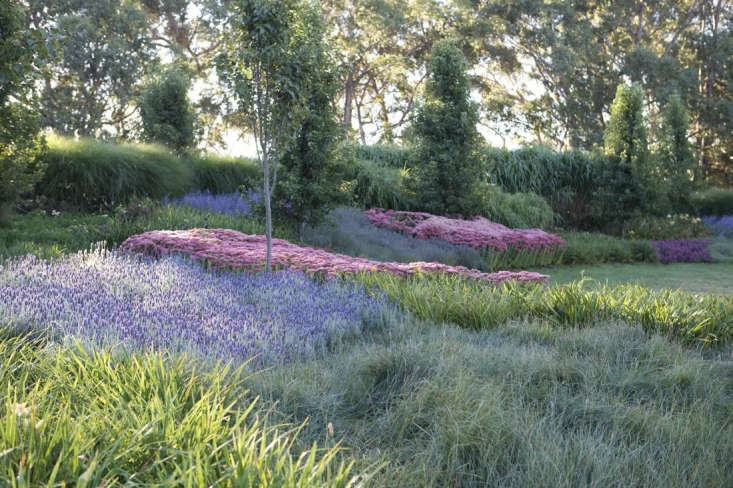Stonecrops, Sedum: “Surprise Succulents”
Say the word “succulent” to a lot of people and instantly they respond fearfully with worries about spiky, thorny, desert plants. Well, shy away no more. I think these leery gardeners have never been properly introduced to Sedums, of which there are hundreds of varieties, ranging in size from creepers to shrubs and useful in the garden for purposes ranging from ground cover to late-season color in a perennials bed. Read on:
N.B.: Featured photograph by Justine Hand for Gardenista, from Before & After: A New Cape Cod Garden for the Old Homestead in Provincetown.
Sedum ‘Autumn Joy’

True, sedums are succulents, but they are fleshy and have the plant power to go beyond the prickly stereotype. The beauty of them is that they are a diverse group that includes creeping ground covers to upright varieties, all fulfilling a need to be either good perennial bed companions or masters of filling in tight, empty spaces.

Sedum morganianum ‘Burro’s Tail’

Cheat Sheet
- Star-shaped flowers often change color as they age through the season, providing long-term garden interest. The flowers also attract pollinators such as butterflies, bees, and hummingbirds.
- A predilection for fast soil makes Sedums perfect for hillsides, seasides, rock gardens, containers, and green roofs. They are also great mixed with other deer-resistant plantings.
- Buy Sedums in six-packs and tuck individuals into nook and crannies between pavers, rock walls, and container plantings.
Sedum lineare ‘Variegatum’

Keep It Alive
- Plant Sedums preferably in full sun, but some can tolerate a bit of shade. Whether or not your Sedum survives in your climate or in freezing weather depends on the origin of your variety. Without proper protection, Sedums that originate from tropical or desert like climates don’t tolerate freezing temperatures. Sedums from cooler areas don’t tolerate intense heat.
- All Sedums appreciate well-draining soil and while some are insanely drought tolerant, others like a regular drink. But when in doubt, give it drought.
- Some taller Sedums respond well to an early spring pruning, taking care not to remove the emerging new growth, while ground covers types need a light trim to remove faded flowers or dead stems.
Sedum ‘Angelina’

N.B. To see more ideas on succulents, see Succulents & Cacti 101: A Field Guide to Planting, Care & Design
- Looking to add to your first aid kit? Be sure to read our Aloe Vera 101 guide. Aloe will come to your aid.
- If it’s a ground cover you’re after, see some of our favorites like Bacopa 101 and Thyme 101.









Have a Question or Comment About This Post?
Join the conversation